-
51 results in Exploration of CardiologySort byMost Viewed
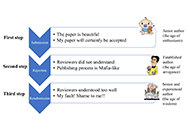 Who is the author: genuine, honorary, ghost, gold, and fake authors?Open AccessEditorialWhile authorship practices can vary across different disciplines, authorship should reflect the individuals who have made a substantial contribution to the research project, take public [...] Read more.Eugenio PicanoPublished: May 13, 2024 Explor Cardiol. 2024;2:88–96
Who is the author: genuine, honorary, ghost, gold, and fake authors?Open AccessEditorialWhile authorship practices can vary across different disciplines, authorship should reflect the individuals who have made a substantial contribution to the research project, take public [...] Read more.Eugenio PicanoPublished: May 13, 2024 Explor Cardiol. 2024;2:88–96
DOI: https://doi.org/10.37349/ec.2024.00024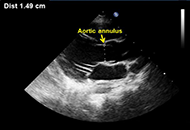 Coronary external diameter index for assessing coronary artery involvement in Kawasaki diseaseOpen AccessOriginal ArticleAim: Transthoracic echocardiography is commonly used to assess coronary artery dilatation in Kawasaki disease (KD). However, existing criteria often miss early abnormalities. This study examines [...] Read more.Andrea Azzarelli ... Francesco VierucciPublished: October 31, 2023 Explor Cardiol. 2023;1:103–113
Coronary external diameter index for assessing coronary artery involvement in Kawasaki diseaseOpen AccessOriginal ArticleAim: Transthoracic echocardiography is commonly used to assess coronary artery dilatation in Kawasaki disease (KD). However, existing criteria often miss early abnormalities. This study examines [...] Read more.Andrea Azzarelli ... Francesco VierucciPublished: October 31, 2023 Explor Cardiol. 2023;1:103–113
DOI: https://doi.org/10.37349/ec.2023.00011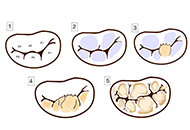 Mitral valve prolapse—arrhythmic faces of the valve diseaseOpen AccessReviewMitral valve prolapse (MVP) is a relatively common mitral valvulopathy and the most common cause of isolated primary mitral regurgitation (MR) requiring surgical repair. It affects about 1–3% of t [...] Read more.Maria Możdżan ... Karina Wierzbowska-DrabikPublished: October 31, 2023 Explor Cardiol. 2023;1:72–87
Mitral valve prolapse—arrhythmic faces of the valve diseaseOpen AccessReviewMitral valve prolapse (MVP) is a relatively common mitral valvulopathy and the most common cause of isolated primary mitral regurgitation (MR) requiring surgical repair. It affects about 1–3% of t [...] Read more.Maria Możdżan ... Karina Wierzbowska-DrabikPublished: October 31, 2023 Explor Cardiol. 2023;1:72–87
DOI: https://doi.org/10.37349/ec.2023.00009
This article belongs to the special issue Common cardiovascular target for a wide gamut of contemporary health problems – thrombotic and arrhythmic sides of an inflammatory coin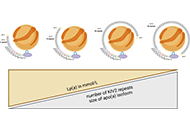 Why and when should be lipoprotein(a) level measured?Open AccessReviewLipoprotein(a) [Lp(a)] is composed of a low-density lipoprotein (LDL) and glycoprotein (a)—apo(a). The size and concentration of Lp(a) in serum can vary among individuals and is determined by gene [...] Read more.Miłosz Broncel, Marlena BroncelPublished: December 29, 2023 Explor Cardiol. 2023;1:180–192
Why and when should be lipoprotein(a) level measured?Open AccessReviewLipoprotein(a) [Lp(a)] is composed of a low-density lipoprotein (LDL) and glycoprotein (a)—apo(a). The size and concentration of Lp(a) in serum can vary among individuals and is determined by gene [...] Read more.Miłosz Broncel, Marlena BroncelPublished: December 29, 2023 Explor Cardiol. 2023;1:180–192
DOI: https://doi.org/10.37349/ec.2023.00015
This article belongs to the special issue Common cardiovascular target for a wide gamut of contemporary health problems – thrombotic and arrhythmic sides of an inflammatory coin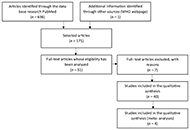 Laboratory markers of metabolic syndromeOpen AccessReviewMetabolic syndrome (MetS) is known as a non-communicable disease (NCD) that affects more and more individuals. MetS is closely related to type 2 diabetes mellitus (T2DM), cardiovascular disease (CVD [...] Read more.Filipa Morgado ... Leonel PereiraPublished: June 24, 2024 Explor Cardiol. 2024;2:114–133
Laboratory markers of metabolic syndromeOpen AccessReviewMetabolic syndrome (MetS) is known as a non-communicable disease (NCD) that affects more and more individuals. MetS is closely related to type 2 diabetes mellitus (T2DM), cardiovascular disease (CVD [...] Read more.Filipa Morgado ... Leonel PereiraPublished: June 24, 2024 Explor Cardiol. 2024;2:114–133
DOI: https://doi.org/10.37349/ec.2024.00026
This article belongs to the special issue Molecular Mechanisms of Cardiovascular Aging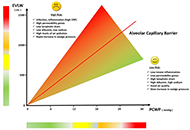 B-lines by lung ultrasound in cardiologyOpen AccessReviewPulmonary congestion is a key determinant of heart failure, but for a long time it has been an elusive target for the clinical cardiologist in the pre-B-line era, despite research efforts of Carlo G [...] Read more.Marco Antonio Rodrigues Torres, Natália Moraes de QuevedoPublished: November 14, 2024 Explor Cardiol. 2024;2:265–279
B-lines by lung ultrasound in cardiologyOpen AccessReviewPulmonary congestion is a key determinant of heart failure, but for a long time it has been an elusive target for the clinical cardiologist in the pre-B-line era, despite research efforts of Carlo G [...] Read more.Marco Antonio Rodrigues Torres, Natália Moraes de QuevedoPublished: November 14, 2024 Explor Cardiol. 2024;2:265–279
DOI: https://doi.org/10.37349/ec.2024.00039
This article belongs to the special issue Multimodality Imaging in Ischemic Heart Disease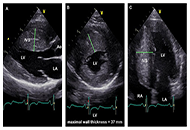 Echocardiographic predictors of outcomes in hypertrophic cardiomyopathyOpen AccessReviewThe use of echocardiography, a straightforward and widely available technique, allows for a comprehensive assessment of the patient with hypertrophic cardiomyopathy (HCM) under both resting and stre [...] Read more.Annamaria Del Franco ... Iacopo OlivottoPublished: October 31, 2023 Explor Cardiol. 2023;1:88–102
Echocardiographic predictors of outcomes in hypertrophic cardiomyopathyOpen AccessReviewThe use of echocardiography, a straightforward and widely available technique, allows for a comprehensive assessment of the patient with hypertrophic cardiomyopathy (HCM) under both resting and stre [...] Read more.Annamaria Del Franco ... Iacopo OlivottoPublished: October 31, 2023 Explor Cardiol. 2023;1:88–102
DOI: https://doi.org/10.37349/ec.2023.00010
This article belongs to the special issue Common cardiovascular target for a wide gamut of contemporary health problems – thrombotic and arrhythmic sides of an inflammatory coin Toxic metals in pregnancy and congenital heart defects. Insights and new perspectives for a technology-driven reduction in food sourcesOpen AccessReviewCongenital heart defects (CHD) represent the most frequent congenital anomalies among newborns, as well as the leading cause of spontaneous abortion, stillbirth, neonatal and infant death. CHD have [...] Read more.Francesca Gorini, Alessandro TonacciPublished: November 13, 2023 Explor Cardiol. 2023;1:114–140
Toxic metals in pregnancy and congenital heart defects. Insights and new perspectives for a technology-driven reduction in food sourcesOpen AccessReviewCongenital heart defects (CHD) represent the most frequent congenital anomalies among newborns, as well as the leading cause of spontaneous abortion, stillbirth, neonatal and infant death. CHD have [...] Read more.Francesca Gorini, Alessandro TonacciPublished: November 13, 2023 Explor Cardiol. 2023;1:114–140
DOI: https://doi.org/10.37349/ec.2023.00012
This article belongs to the special issue Environmental Cardiology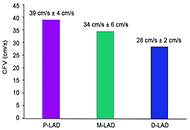 Normal physiologic coronary flow velocity gradient across the left anterior descending artery in healthy asymptomatic subjectsOpen AccessOriginal ArticleAim: Coronary flow velocity (CFV) can be obtained with transthoracic echocardiography (TTE) in the left anterior descending coronary artery (LAD). The physiologic flow velocity gradient across th [...] Read more.Fausto Rigo ... Maurizio AgnolettoPublished: August 31, 2023 Explor Cardiol. 2023;1:42–48
Normal physiologic coronary flow velocity gradient across the left anterior descending artery in healthy asymptomatic subjectsOpen AccessOriginal ArticleAim: Coronary flow velocity (CFV) can be obtained with transthoracic echocardiography (TTE) in the left anterior descending coronary artery (LAD). The physiologic flow velocity gradient across th [...] Read more.Fausto Rigo ... Maurizio AgnolettoPublished: August 31, 2023 Explor Cardiol. 2023;1:42–48
DOI: https://doi.org/10.37349/ec.2023.00006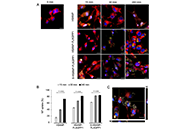 Nanoparticles loaded with the DNA methyltransferase inhibitor SGI-1027 decrease murine atherosclerosis and inflammation in cultured human macrophagesOpen AccessOriginal ArticleAim: The DNA of the atheroma is hypermethylated relative to adjacent healthy vascular tissue. A significant portion of hypermethylated loci in the atheroma DNA map to genes related to macrophage [...] Read more.Ana Cristina Márquez-Sánchez ... Silvio ZainaPublished: April 10, 2024 Explor Cardiol. 2024;2:49–66
Nanoparticles loaded with the DNA methyltransferase inhibitor SGI-1027 decrease murine atherosclerosis and inflammation in cultured human macrophagesOpen AccessOriginal ArticleAim: The DNA of the atheroma is hypermethylated relative to adjacent healthy vascular tissue. A significant portion of hypermethylated loci in the atheroma DNA map to genes related to macrophage [...] Read more.Ana Cristina Márquez-Sánchez ... Silvio ZainaPublished: April 10, 2024 Explor Cardiol. 2024;2:49–66
DOI: https://doi.org/10.37349/ec.2024.00021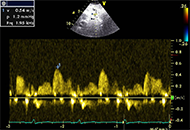 Feasibility of coronary flow velocity reserve during semi-supine exercise echocardiography: a single center study of 3,014 patientsOpen AccessOriginal ArticleAim: There is a lack of studies that analyzed factors influencing on feasibility of coronary flow velocity reserve (CFVR) during exercise stress echocardiography (SE). The aim of the study was to [...] Read more.Angela Zagatina ... Elena KalininaPublished: February 04, 2024 Explor Cardiol. 2024;2:9–18
Feasibility of coronary flow velocity reserve during semi-supine exercise echocardiography: a single center study of 3,014 patientsOpen AccessOriginal ArticleAim: There is a lack of studies that analyzed factors influencing on feasibility of coronary flow velocity reserve (CFVR) during exercise stress echocardiography (SE). The aim of the study was to [...] Read more.Angela Zagatina ... Elena KalininaPublished: February 04, 2024 Explor Cardiol. 2024;2:9–18
DOI: https://doi.org/10.37349/ec.2024.00017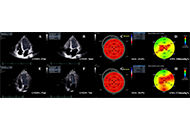 Noninvasive identification and therapeutic implications of supernormal left ventricular contractile phenotypeOpen AccessReviewLeft ventricular (LV) function is typically evaluated through LV ejection fraction (EF), a robust indicator of risk, showing a nonlinear increase in mortality rates below 40%. Conversely, [...] Read more.Yi Wang, Lixue YinPublished: June 17, 2024 Explor Cardiol. 2024;2:97–113
Noninvasive identification and therapeutic implications of supernormal left ventricular contractile phenotypeOpen AccessReviewLeft ventricular (LV) function is typically evaluated through LV ejection fraction (EF), a robust indicator of risk, showing a nonlinear increase in mortality rates below 40%. Conversely, [...] Read more.Yi Wang, Lixue YinPublished: June 17, 2024 Explor Cardiol. 2024;2:97–113
DOI: https://doi.org/10.37349/ec.2024.00025 Exploration of Cardiology: a new journal is bornOpen AccessEditorialEugenio PicanoPublished: July 01, 2023 Explor Cardiol. 2023;1:1–3
Exploration of Cardiology: a new journal is bornOpen AccessEditorialEugenio PicanoPublished: July 01, 2023 Explor Cardiol. 2023;1:1–3
DOI: https://doi.org/10.37349/ec.2023.00001 Alcohol—dose question and the weakest link in a chemical interplayOpen AccessReviewThe deleterious consequences of alcohol consumption are extensively documented across various dimensions of human health, encompassing somatic disorders such as nervous system impairments, digestive [...] Read more.Piotr Hamala, Karina Wierzbowska-DrabikPublished: August 18, 2023 Explor Cardiol. 2023;1:15–25
Alcohol—dose question and the weakest link in a chemical interplayOpen AccessReviewThe deleterious consequences of alcohol consumption are extensively documented across various dimensions of human health, encompassing somatic disorders such as nervous system impairments, digestive [...] Read more.Piotr Hamala, Karina Wierzbowska-DrabikPublished: August 18, 2023 Explor Cardiol. 2023;1:15–25
DOI: https://doi.org/10.37349/ec.2023.00003
This article belongs to the special issue Common cardiovascular target for a wide gamut of contemporary health problems – thrombotic and arrhythmic sides of an inflammatory coin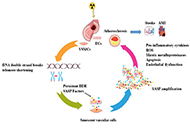 Low-doses ionizing radiation exposure: an emerging causal risk factor for cardiovascular diseaseOpen AccessCommentaryMaria Grazia AndreassiPublished: December 11, 2023 Explor Cardiol. 2023;1:141–147
Low-doses ionizing radiation exposure: an emerging causal risk factor for cardiovascular diseaseOpen AccessCommentaryMaria Grazia AndreassiPublished: December 11, 2023 Explor Cardiol. 2023;1:141–147
DOI: https://doi.org/10.37349/ec.2023.00013
This article belongs to the special issue Environmental Cardiology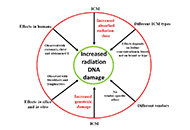 Impact of iodinated contrast media on X-ray-induced DNA damage: a comprehensive reviewOpen AccessReviewDrawing insights from a spectrum of in vitro, in vivo experimental, and clinical studies, this review illuminates the underlying mechanism by which iodinated contrast media (ICM) exerts an indirect [...] Read more.Chiara Iacconi ... Enrica CiofiniPublished: April 19, 2024 Explor Cardiol. 2024;2:79–87
Impact of iodinated contrast media on X-ray-induced DNA damage: a comprehensive reviewOpen AccessReviewDrawing insights from a spectrum of in vitro, in vivo experimental, and clinical studies, this review illuminates the underlying mechanism by which iodinated contrast media (ICM) exerts an indirect [...] Read more.Chiara Iacconi ... Enrica CiofiniPublished: April 19, 2024 Explor Cardiol. 2024;2:79–87
DOI: https://doi.org/10.37349/ec.2024.00023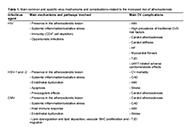 Viral infections in cardiometabolic risk and disease between old acquaintances and new enemiesOpen AccessReviewAtherosclerosis is a chronic disease, characterized by chronic inflammation, endothelial dysfunction, and lipid deposition in the vessel. Although many major, well-identified risk factors for athero [...] Read more.Cristina VassallePublished: December 27, 2023 Explor Cardiol. 2023;1:148–179
Viral infections in cardiometabolic risk and disease between old acquaintances and new enemiesOpen AccessReviewAtherosclerosis is a chronic disease, characterized by chronic inflammation, endothelial dysfunction, and lipid deposition in the vessel. Although many major, well-identified risk factors for athero [...] Read more.Cristina VassallePublished: December 27, 2023 Explor Cardiol. 2023;1:148–179
DOI: https://doi.org/10.37349/ec.2023.00014
This article belongs to the special issue Environmental Cardiology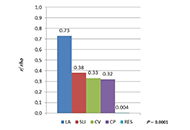 In search of heart barometer—advantage of left atrial dimension over electrocardiographic indices of left ventricular hypertrophy in arterial hypertensionOpen AccessOriginal ArticleAim: Left ventricular (LV) hypertrophy (LVH) is a common and relevant complication of arterial hypertension (AH) and 12-lead electrocardiogram (ECG) is widely used for its preliminary assessment. [...] Read more.Bogusława Nowak ... Karina Wierzbowska-DrabikPublished: July 14, 2023 Explor Cardiol. 2023;1:4–14
In search of heart barometer—advantage of left atrial dimension over electrocardiographic indices of left ventricular hypertrophy in arterial hypertensionOpen AccessOriginal ArticleAim: Left ventricular (LV) hypertrophy (LVH) is a common and relevant complication of arterial hypertension (AH) and 12-lead electrocardiogram (ECG) is widely used for its preliminary assessment. [...] Read more.Bogusława Nowak ... Karina Wierzbowska-DrabikPublished: July 14, 2023 Explor Cardiol. 2023;1:4–14
DOI: https://doi.org/10.37349/ec.2023.00002
This article belongs to the special issue Common cardiovascular target for a wide gamut of contemporary health problems – thrombotic and arrhythmic sides of an inflammatory coin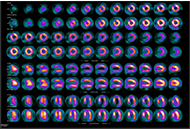 Diagnostic modalities for ischemic heart disease: evaluating the role of stress echocardiography, cardiac CT, and myocardial perfusion scintigraphy in guiding coronary angiographyOpen AccessReviewCardiovascular diseases, particularly ischemic heart disease (IHD), are the leading cause of mortality globally, accounting for 16% of deaths. Effective management of ischemic cardiomyopathy (ICM) i [...] Read more.Marco Fabio Costantino ... Luisiana StolfiPublished: January 13, 2025 Explor Cardiol. 2025;3:101243
Diagnostic modalities for ischemic heart disease: evaluating the role of stress echocardiography, cardiac CT, and myocardial perfusion scintigraphy in guiding coronary angiographyOpen AccessReviewCardiovascular diseases, particularly ischemic heart disease (IHD), are the leading cause of mortality globally, accounting for 16% of deaths. Effective management of ischemic cardiomyopathy (ICM) i [...] Read more.Marco Fabio Costantino ... Luisiana StolfiPublished: January 13, 2025 Explor Cardiol. 2025;3:101243
DOI: https://doi.org/10.37349/ec.2025.101243
This article belongs to the special issue Multimodality Imaging in Ischemic Heart Disease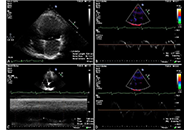 Cardiovascular imaging in COVID-19: insights into features and complicationsOpen AccessReviewThe clinical manifestations of COVID-19 which mainly involve the respiratory system may however affect also cardiovascular system. There are a lot and still increasing numbers of reports revealing c [...] Read more.Iwona Duraj ... Karina Wierzbowska-DrabikPublished: October 30, 2023 Explor Cardiol. 2023;1:59–71
Cardiovascular imaging in COVID-19: insights into features and complicationsOpen AccessReviewThe clinical manifestations of COVID-19 which mainly involve the respiratory system may however affect also cardiovascular system. There are a lot and still increasing numbers of reports revealing c [...] Read more.Iwona Duraj ... Karina Wierzbowska-DrabikPublished: October 30, 2023 Explor Cardiol. 2023;1:59–71
DOI: https://doi.org/10.37349/ec.2023.00008 -
